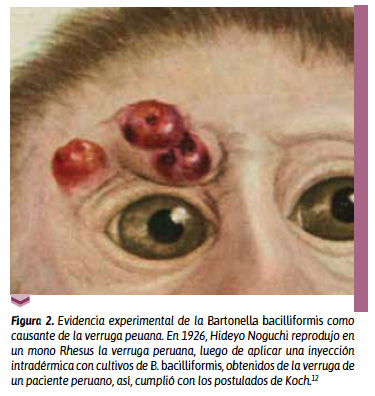 |
| Cartoon credit: Laura Grover via Public Radio International |
I saw this on my facebook feed the other day, and at first I thought, "oh, just another cartoon about gender gaps and recruiting women and girls into STEM fields..."
But, then I realized that a) my disenchanted reaction is a result from the overwhelming amount of media attention that has been dedicated to the subject of women in science lately (always?), and b) this cartoon pissed me off. In the 5+ years that I've been running this blog, I've maybe covered 3 political topics because that's not my main goal. There are enough blogs out there that overlap personal opinions and science or STEM (science, technology, engineering, and math) topics, and really, who cares? But I'm going to talk about the issues of gender in science today, because there are some issues that aren't being discussed by most popular news and media outlets.
Let's address each of my reactions separately, shall we?
a) My disenchanted reaction due to the overwhelming amount of media attention that has been dedicated to women in science:
Everyone is eager to tell you that women are underrepresented in STEM fields. In a lot of places, women are still treated as diversity hires. There are societies for women in science, scholarships given to encourage young women to major in STEM degrees, organizations to help young girls find the path to STEM careers, and Google doodles dedicated to Marie Curie.
I think people love to believe that women are minorities in STEM because everyone hates statistics. I know, I am not a fan of statistics (exception: when you work super hard on some statistical analysis and get really satisfying results), but I can break some recent statistics down for everyone:
According to this economic briefing released in October of 2014 by the Council of Economic Advisers to the President of the United States, women are "now more likely than men to earn a bachelors degree and attend graduate school".
In fact, women 25-34 years old were 21% more likely to graduate from college than men, and 48% more likely to attend graduate school.
 | |||||
| Image credit: US News |
Statistics associated with women obtaining degrees in STEM fields are EVEN BETTER, according to an NSF study released this year. According to the report:
"Women have earned 57% of all bachelor's degrees and about half of all science and engineering (S&E) bachelor's degrees since the late 1990s. However, women's level of participation in S&E fields varies, and within fields it tends to be consistent over every degree level. In most fields, the proportion of degrees awarded to women has risen since 1993. The proportion of women is lowest in engineering, computer sciences, and physics. Women earn about one-third of the doctorates in economics and slightly more than one-fourth of doctorates in mathematics and statistics."I'm curious, would you have guessed that women earn approximately half of the science and engineering undegraduate degrees conferred in the US?
My point is HELLO WE ARE HERE. WE ARE DOING SCIENCE RIGHT NOW. Women are represented in STEM fields. We are in the lab, in the field, in the workshop, in space, published in leading scientific journals, on computers, on advisory boards, at conferences, and in classrooms and lecture halls. Quite frankly, every time an article comes out about the need to recruit women into STEM, a young girl gets discouraged and decides that science hates women.
 |
| Ella Tyree, image credit: cliotropic |
Also, every time an article comes out about the need to recruit women into STEM careers, someone of an actually underrepresented population in STEM fields loses hope. Example:
Despite considerable progress over the past two decades, the gap in educational attainment separating underrepresented minorities from whites and Asians remains wide. In general, underrepresented minorities are less likely than whites and Asians to graduate from high school, enroll in college, and earn a college degree. Among underrepresented minorities who do graduate from college, the overall degree patterns are similar to those of whites. Asians are more likely than whites and underrepresented minorities to earn a college degree in a science and engineering (S&E) field. Although whites' share of S&E degrees has declined over the past 2 decades, they continue to earn a majority of degrees in all broad S&E fields.This example is from the same NSF survey cited above. When I worked for NASA, I worked in a building that was full of white men and women. There were a ton of women (in fact, our lab was 75% women!), but I can't say that I ever interacted with any Black or Hispanic researchers, primary investigators, or division chiefs. When I started working at Stanford, I went weeks until I saw a black person on campus -- not just my building, but on the entire campus. I have other examples, but they all seem redundant. I attended a college where Black students were the majority, yet the halls of the science buildings were mostly white.
If you really want to continue talking about women in science, maybe our attention should be diverted from recruiting and instead, focus on fixing the anti-women culture that surrounds STEM fields. Actually, we shouldn't be recruiting women into fields where a majority of them feel they need to leave because they are repeatedly sexually harassed or verbally discredited. Its not sustainable, and its not safe. We shouldn't have to laugh at things like the #distractinglysexy hashtag. We should laugh because we can laugh at ourselves, not because its an uncomfortable situation that no one really wants to talk about.
b) The above cartoon pissed me off.
When I was a young girl, I played with barbies and cabbage patch dolls. I acted out my ridiculous dreams by "playing Ninja Turtles" with my best friend, a young boy that lived across the street. I was a gymnast and I loved birds. I built furniture while listening to AC/DC with my dad. My favorite color was purple, not pink. As a teen, I found punk rock and would go into mosh pits. I wore men's pants one day and a mini skirt the next. I played water polo on a co-ed team and drew anatomically-correct cadavers in art class. I loved math until I hated it. I helped one of my high school boyfriends work on his '72 chevelle malibu and drove it more than he did. I shaved my legs and armpits, or I didn't. I dyed my hair every color imaginable. I dressed like a pin-up girl sometimes, and other times I'd be mistaken for a man (well, a young man).
I wasn't a stereotypical girl, but to be honest, I don't know many women who ever followed a stereotypical path. Maybe that's because the roles and actions expected of women have changed rapidly with each decade, thanks to our ever growing ability to collectively stand up for the things we don't like. But, really, what does feminine mean anymore? Does it mean pink? Does it mean being a mom? Does it mean working, not working? Does it mean wearing skirts and high heels all the time? Does it mean feeling bad about yourself and your body, or living by the rules of magazines like Cosmopolitan, or any other magazine that's actually owned and funded by a group of men?
I'm going to have to say I don't actually know, but I do know that my heart didn't always lead me to science. I found it eventually, but I wasn't actively recruited. Science found me. I think that's what really makes me mad about cartoon above, actually. I did like dolls (and no, I never ripped the heads off of any of my barbies), and I also liked to do fun things. I liked to do things that made me feel smart, and challenged what I understood about the world. Science is about exploration, and when you are young, so is playing with dolls! I like science because its gross and beautiful at the same time, which is oddly how being a women makes me feel most of the time.
The cartoon really makes me mad because I don't see the point in trying to emphasize gender in science. It's an issue if you are harboring an unsafe culture full of harassment, but it shouldn't be an issue when recruiting kids into science. We're hearing about more kids deciding to transition between genders, and who is to say what they'll be interested in doing as adults? No one, because its 2015 and your gender shouldn't define what you can and cannot do.
If we educate girls and boys and everyone in between on an equal level, then people will find their own path. We shouldn't be forcing science, but showing everyone why it is awesome and for everyone. Saying women who aren't stereotypically feminine are better suited for careers in STEM is like saying you have to be quirky, rude, and somewhere "on the spectrum" to be a scientist (like the Big Bang Theory leads many people to believe). Also, can we please talk about other women in science instead of only praising Marie Curie all the time? Yes, she was great, but other women in STEM were/are great too.
I currently work in a lab with two other women. Both of them wear lipstick and dresses all the time. I don't ever, unless its required of me. One of them loves the color pink so much that I ordered her a hot pink ice bucket and tube racks for the lab. She also has a PhD. We both bleach our hair. At NASA, our analytical chemist was (is still) a mom, a runner, and someone who volunteers with her church every weekend. Another chemist at NASA, a researcher with her PhD, looked like a Puerto Rican version of Taylor Swift and ruled everything just the same. Just because I have tattoos, and choose to wear jeans and no makeup every day doesn't mean I'm more or less qualified to be a scientist than any of these other women, or any of the men in STEM fields either.
We all attack our lives differently, and our interests or career choices shouldn't have anything to do with the gender we prefer for ourselves. What should matter is what you bring to the table, or the lab, or the field, or the operating room, or wherever it is that you want to work. Science isn't (always) about putting things in boxes, it's about discovering what makes things unique.
and that's all I have to say about that.










